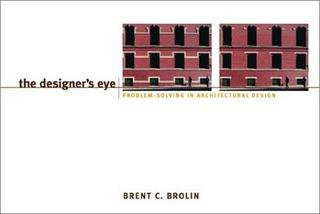Realism about aesthetic values

Just discovered a great book on architecture: Brent C. Brolin's "The Designer's Eye" (Norton, 2002). It consists entirely of pairs of photographs of buildings, accompanied by commentary by Brolin. Each pair contains a doctored and undoctored photo of a building. In the doctored photograph of each pair, Brolin has changed some particular aspect of the building for the worse. In the commentary, he explains why the change is for the worst. I think that this book provides an excellent case study for philosophical debates about the realism (or lack thereof) of aesthetic values and our judgments about them. Basically, such debates center around the question of whether aesthetic claims are literally truth-evaluable. (What it means for aesthetic claims to be "literally" truth-evaluable is debatable, of course, but for present purposes it suffices to say that "literal" truth-evaluability precludes drawing invidious distinctions between the not-completely-full-blooded-truth-evaluability of aesthetic claims and the completely-full-blooded-truth-evaluabilty of some other paradigmatic sort of knowledge, such as natural scientific knowledge. Of course, minimalism about truth and truth-evaluability threatens to dissolve this way of construing the debate, but I'm not going to worry about that right now.)
Consider, for instance, Brolin's discussion of the pair of photographs I have posted below under the names "Exhibit 1" and "Exhibit 2". Here is Brolin's commentary:
"The two pictures [below] are almost identical. In the lower photograph a line cuts across the building (it's a very vivid red in the original). The line has a visual impact. It emphasizes the horizontality in two ways. It is like a measuring tape running across the full width of the building saying, 'Look how wide I am'. It is also a divider. It slices through the only element that challenges the building's horizontality, cutting the squarish block to the left of the entrance into two horizontally proportioned rectangles." (p. 4)
First off, I think it is essential to say that I think Brolin is clearly right about this. Although the philosophical debate is (supposedly) about what it is for aesthetic judgments to be "right" or "wrong"--where the debate is supposed to be about whether we need construe the kind of "rightness" and "wrongness" involved in realistic terms--and therefore neutral on the "truth" or "falsity" of any particular first-order aesthetic judgments, I think reading and thinking about substantial first-order aesthetic claims such as this one--whose truth seems palpable--creates a presumption in favor of realism that is hard to dismiss out of hand. My point, in a sense, is just that it's much easier to motivate anti-realism by starting with very thin examples of aesthetic judgment that don't strike one as being as insightful as Brolin's is. But I think this point is important because it's this sense of the possibility of such judgments exhibiting such insight that goes a (really) long way towards motivating realism and making it (very) difficult to construct anti-realist accounts that are able to plausibly explain where this sense of insightfulness comes from. Of course, contemporary debates about realism and anti-realism about aesthetic (and ethical) value claim to take the ordinary practice of judging some such aesthetic claims to be "true" for granted. The debate is supposed to just be about what sort of facts need to be invoked in order to provide a philosophical explanation of this ordinary practice. But I seriously wonder whether starting with examples such as Brolin's wouldn't partially undermine much of the motivation for anti-realist accounts. For example, here are two arguments for anti-realism that I think have a hard time getting off the ground if one begins with examples such as Brolin's:
(1) The argument from diversity (the view that reasonable disagreement about aesthetic judgments is ineliminable). I think that with regard to aesthetic judgments such as Brolin's, it's easier to say, "If you don't agree, then you don't get it" than it is to say "Of course, it's obvious that reasonable people could disagree about this".
(2) The argument from internalism (roughly, the view that sincerely believing that something is beautiful is necessarily connected up with acting in certain ways). Once again, it is easy to make internalism sound mysterious if one just focuses on examples like "Well, couldn't someone think the the 'Mona Lisa' beautiful without that belief in any way affecting their actions?', rather than examples like Brolin's. For instance, it would seem to me to be practically irrational for someone to say, "Oh, I see Brolin's point, but I'd rather build the building without the line, thank you very much". What? You think the one looks better, but you're not going to build it that way (without invoking considerations like the fact that the one with the line is more expensive and we're low on funds, etc.)? The sense of mystery that anti-realists like to dwell on with regard to internalism (in order to motivate the claim that aesthetic judgments are really just expressions of non-cognitive affective responses, for example) is simply lacking, I think, if one begins with an aesthetic judgment such as Brolin's--that is, one that is obviously true.
I should try and say something later about why I think the sense of insightfulness that accompanies reading Brolin is important. More later.

0 Comments:
Post a Comment
<< Home